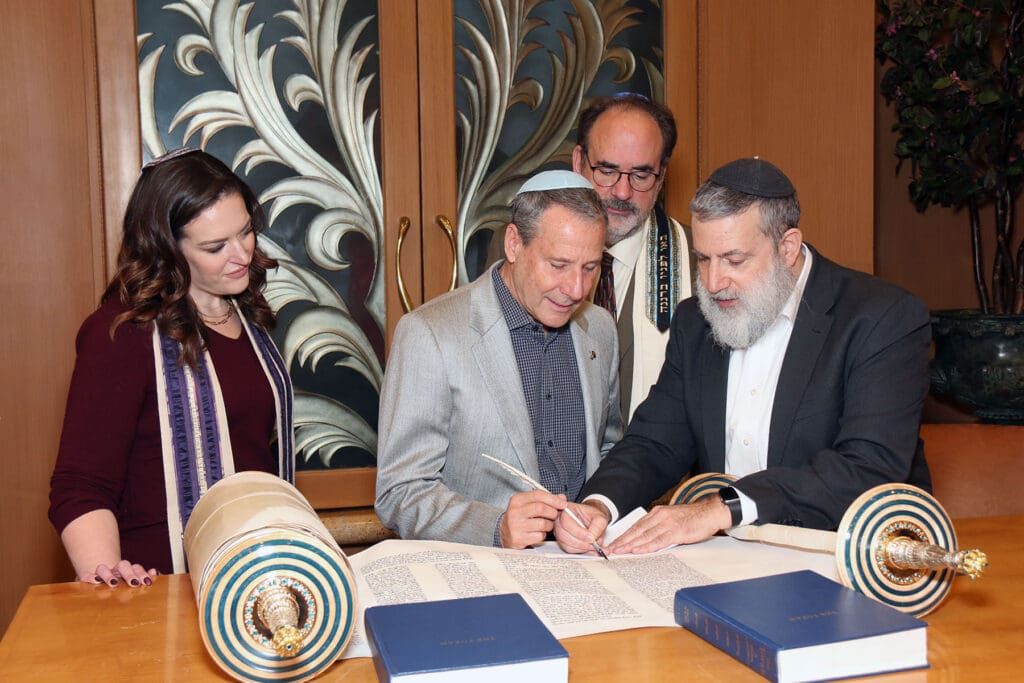

Jonathan Sparer
The fifth of the Five Books of Moses, the Book of Deuteronomy primarily contains Moses’ last will and testament to the Children of Israel as they are poised to enter the Promised Land.
In Hebrew the book is commonly referred to as Devarim, meaning “words” or “things,” based on the opening line, “And these are the words that Moses spoke to the children of Israel.”1 Since Moses uses this book to recount many events and commandments previously recorded in the other books of the Torah, it is also known as Mishneh Torah, “a second Torah,” or Deuteronomy (from the Greek words for “second law”).
Moses revisits many of the high points and low points in the Jews’ 40-year sojourn in the desert.
Addressing the Jewish people, Moses revisits many of the high points and low points in the Jews’ 40-year sojourn in the desert. He uses the opportunity to urge the people to follow the mitzvahs and live a G‑dly life. Many mitzvahs and laws are also found here. Some are repeated from the previous books; others are taught here for the first time.
Some Major Landmarks
The 10 Commandments: Moses recounts the event at Sinai, and repeats the 10 Commandments with some minor additional explanations.
Shema: The verse that has become central to Jewish worship and belief, “Hear O Israel, the L‑rd is our G‑d, the L‑rd is one,” is followed by the paragraph of Veahavta, where we are told to love G‑d, learn Torah, recite the Shema, teach our children, wear tefillin and affix mezuzahs.
Shirat Haazinu: The penultimate portion, Haazinu, is largely a poetic song (arranged in two side-by-side columns) in which Moses exhorts the people to remain faithful to G‑d and admonishes them for not doing so.
Finally, Moses delivers an individual message and blessing to each of the tribes. The last lines of the book tell us of Moses’ passing, and how G‑d Himself buried Moses in an unknown place on Mt. Neb.
Who wrote those last lines? According to one Talmudic tradition, those eight verses were written by Joshua after Moses’ death. Others, however, say that G‑d dictated them to Moses, who transcribed them in tears.
The Bridge
The Torah contains two parts, the Written Torah and the Oral Tradition (which was first committed to writing in the Talmudic era). Deuteronomy, which is Moses’ written transcript of his oral exhortation, bridges these two bodies of Torah.
